The usual pack, sisal, jute fiber has long ceased to be used exclusively as insulation, sealing or padded material. The raw materials acquired for such purposes are great for creativity and practically nothing but the price does not differ from Sizal for art crafts.
Even a small amount of fiber is enough to realize the mass of creative ideas. Looking at the end result, any doubts will remain in the past.
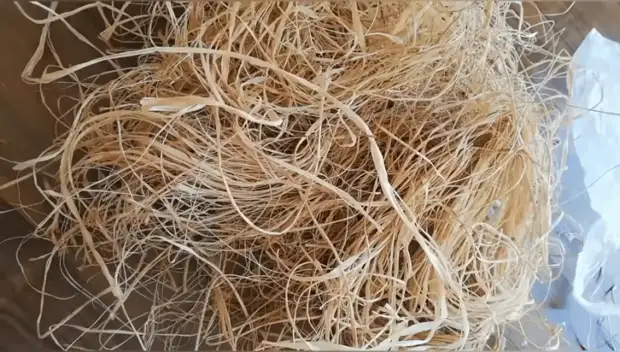
At the preparatory stage, fiber should be made more supplied. To do this, it is necessary to sprinkle with water, and then put it on the cellophane package.
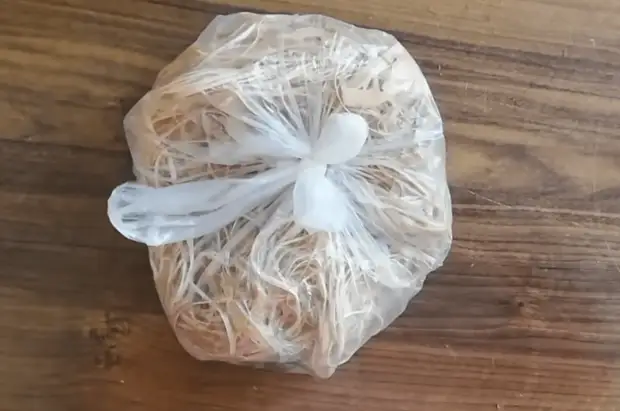
Run a little forward, open the mystery: the ultimate goal is to create a designer rug for serving. The basis for it will be a lining of a coarse linen fabric or burlap. In order not to be calculated with the size, we use the usual tray for dishes instead. By setting the desired form, cut out the workpiece, if necessary, process the edge.
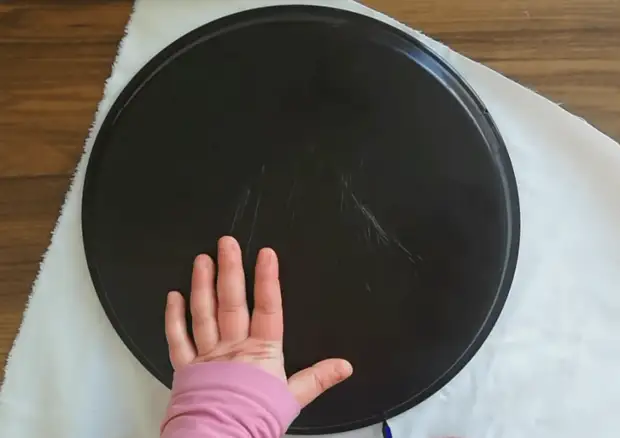
Having gathered softened and more pliable fibers in a small bundle, we make a node, and then we ride the usual pigtail. To do on this moment without assistance, invent the mounting option. It is important that the fiber during weaving is stretched.
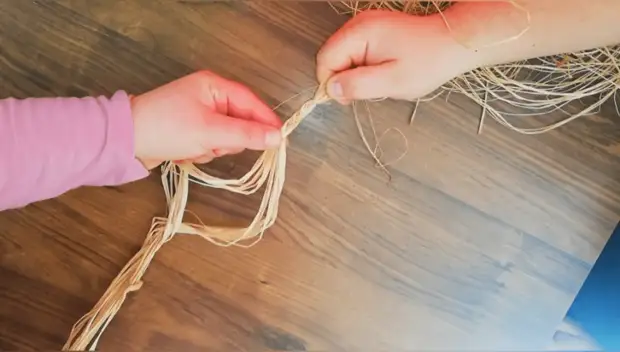
In the course of work, additional threads are inserted so that the braid does not lose volume.
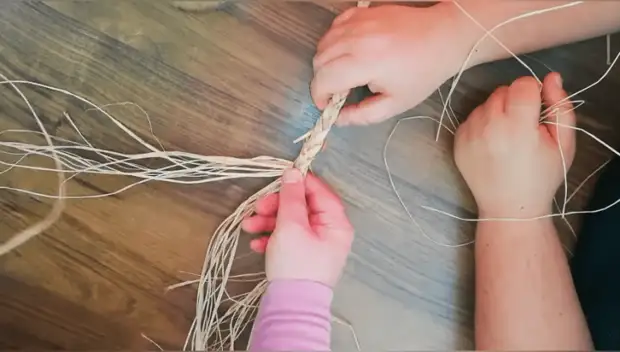
After performing some of the work, you can already start the mounting of the pigtail to the lining. We begin to sew a braid from the center to the edges on the principle of snail, while laying some stitches through the top.
It is convenient to be partially sewing a pigtail, we can continue weaving. This allows you to do without preliminary calculations.
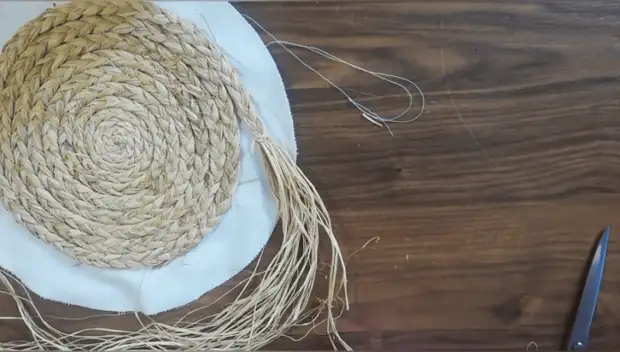
Closer to the end of the circle deliberately cease to add fibers, so the braid thickness will gradually come to "no" and the transition will be smooth.
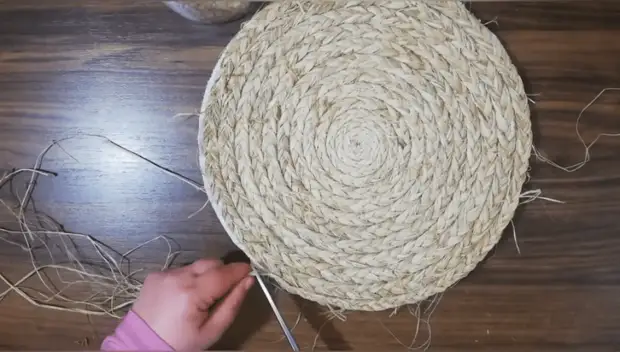
If you wish, the workpiece can be additionally shifted manually or on a typewriter.
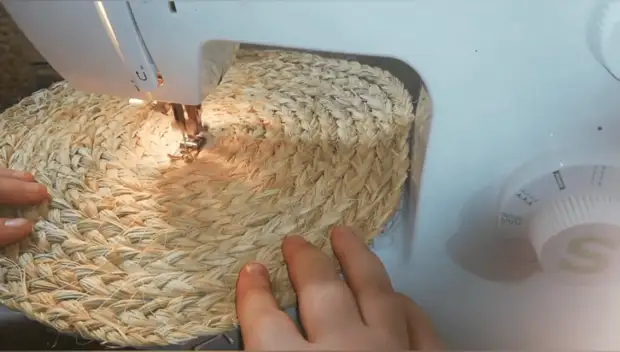
The next step is the creation of a fringe. Long fibers will be the basis, and the bichroma itself will be made of short. Bending a short fiber segment in half, we start it for the basis so that the loop was turned out to be from above, and then we introduce both ends into the loop at the same time and drag it. If necessary, the filament of the base is increasing.
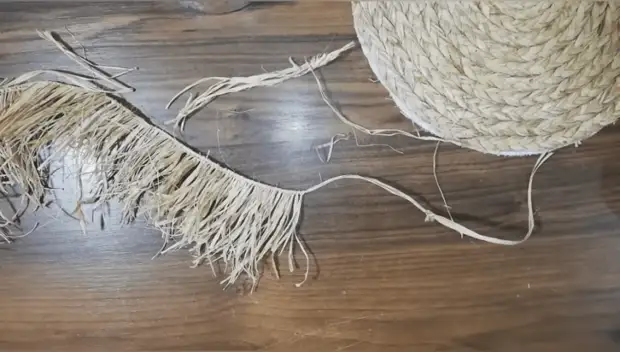
When the strip of the desired length is made, sew it around the perimeter to the base.
Having passed the whole circle, close the edge and cut the thread.
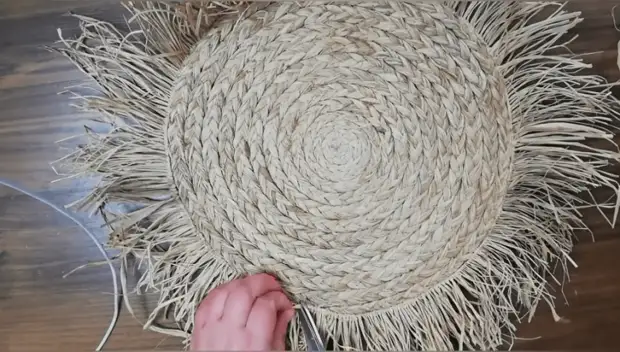
The last barcode is the lumbagon of the fringe.
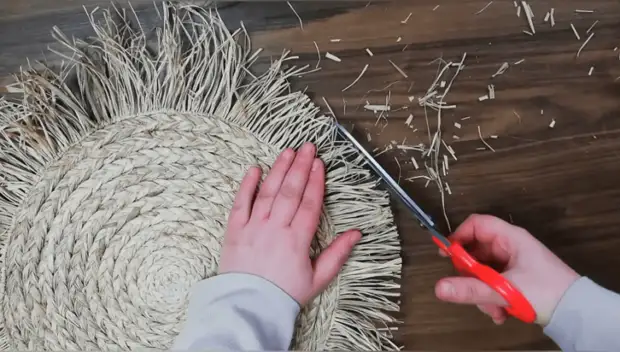
Then it remains only to admire the result. Such a rug, if desired, you can even repaint. It is convenient and that it can be subjected to wet processing. Taking the basis of this idea, you can create a lot of interesting designer things.
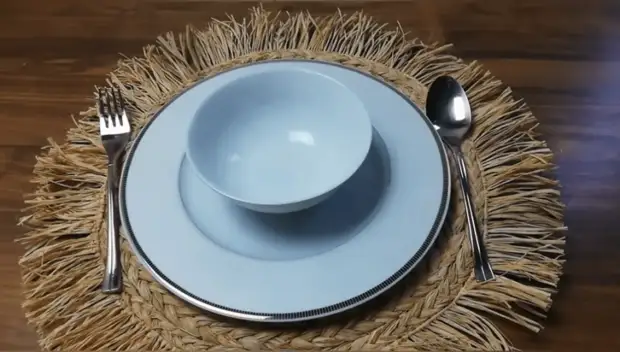
More details regarding the creation of an unusual interior decor, in the video below:

